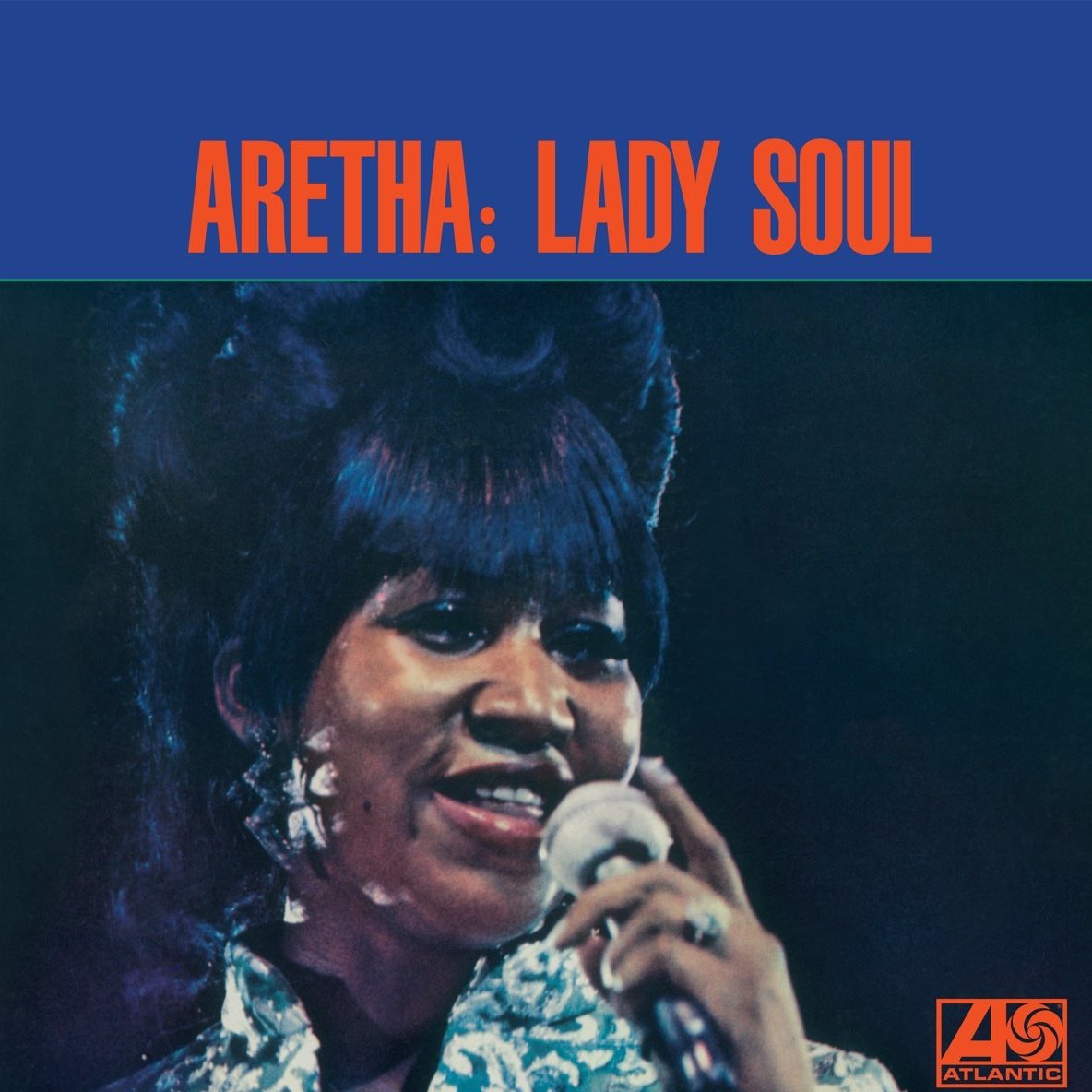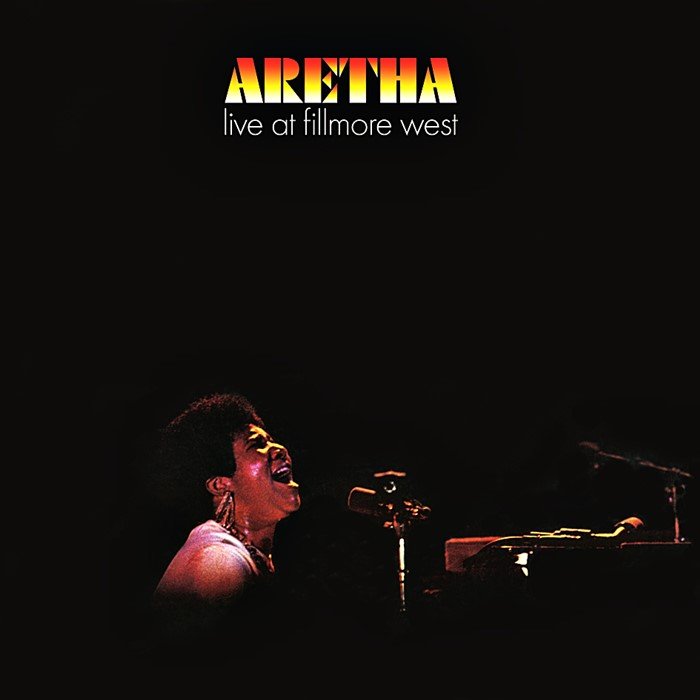Happy 50th Anniversary to Aretha Franklin’s nineteenth studio album Hey Now Hey (The Other Side of the Sky), originally released June 25, 1973.
Depending on who you ask, the general consensus for Aretha Franklin’s nineteenth studio album, 1973’s Hey Now Hey (The Other Side of the Sky), falls under two polarizing camps. The first camp usually lambastes it as one of her worst albums, the critical moment her clout in the soul landscape began to slip by the wayside. The second cites it as a curious, yet lesser work in her long and distinguished catalog, spotlighting its somewhat avant-garde eccentricities without exerting any nuanced context. The assertion that intersects these two camps, though, is that the album served as a sharp departure in Franklin’s artistic trajectory by that point.
Interestingly, Hey Now Hey was her first album on Atlantic Records that wasn’t helmed by the production talents of Jerry Wexler, Arif Mardin, or Tom Dowd. This time around, she took the reins again as co-producer (a role she first held for 1972’s Amazing Grace) and teamed up with the legendary Quincy Jones. Jones, who had already gained prominence as a respected musician, composer, arranger, and producer in the jazz world, was furthering his career as a recording artist in his own right. By the 1970s, his far-reaching musical prowess loomed large in pop, with numerous productions and acclaimed TV and film scores under his belt. He would soon have his sights set on putting an indelible touch on R&B. It was inevitable that Franklin would become drawn to Jones, as she sought to branch out musically in an era of unprecedented creativity and possibility that was exploding in black music.
A worldly mélange of styles and sounds were gaining wide popularity both nationally and internationally. Ambitious artistic statements engulfed the landscape, with artists breaking traditional molds and exploring newfound innovation. In contrast to earlier eras when albums highlighted accompanying singles and built them around assorted, subpar material, several albums in the 1970s primarily functioned as song cycles, with conceptual threads that supported the overall musical value. Though still plagued by racial segregation, FM radio formats were more embracive toward album cuts and varied tastes outside of commercial rock and pop idioms.
Before, Franklin’s studio albums from 1967 to early 1972 were constituted of songs that were mostly recorded from different sessions, over a varied span of days, months, or years. It was a formula that worked in the favor of producers and Atlantic, as there was no clear-cut focus on a specific album when recording material. Their focus was driving productivity to build momentum. When producers had enough supplementary material in the can to support the primary single material, they could scrap together an album for release. By the middle of 1972, the script flipped.
Coming off the heels of recording two historic stints at Los Angeles’ New Temple Baptist Church for what would later be synthesized into Amazing Grace, Franklin and Jones worked tediously on music over a five month period. Initially, Jones envisioned a straight ahead jazz recording, with Franklin being accompanied by the most proficient musicians in jazz. Then, concepts kept evolving and Atlantic’s demand for new product grew tense. Sessions got longer and the duo recorded a huge array of songs (reportedly an upwards of twenty).The end result that brewed from these meticulous sessions screamed eclectic. It couldn’t have been anything else.
Listen to the Album:
In all measures, Hey Now Hey (The Other Side of the Sky) presents Aretha Franklin at her most esoteric. Stretching across psychedelia, funk, classical, jazz, and blues, it’s also her most sprawling and escapist album. True, it’s overlabored in its conception, but it’s so lavishly arranged at the same time. Absent, for the most part, are the dramatic, lovelorn platitudes that positioned Franklin as the leading soul sister pundit for every woman in love. You won’t even come across many politically-charged, empowerment ethoses either. Both Franklin and Jones strive for something theoretically meditative and musically complex—thoughtful, earthy, whimsical, and wildly loose. Something far less rooted in the conventional fare of the era’s soul climate and either of their respective paths.
The album’s cryptic title track “Hey Now Hey (The Other Side of the Sky)” sets the course. Written by Franklin, it’s a psychedelic soul jam that bounces between sweltering funk and grandeur pop. Lyrically, Franklin imagines an otherworldly utopia where spirituality, love, and peace endure. With closer listens, one can speculate that the “other side of the sky” she’s referencing is heaven.
She takes on Leonard Bernstein’s “Somewhere,” the immortal showstopper from West Side Story. Accompanying herself on piano, Franklin renders a deeply expressive, mostly orchestral, six-minute reading of the song. Grandly dramatic, it starts out delicately, and then morphs into a jazzy intermission with Franklin showcasing her stirring piano work and Phil Woods soloing on alto sax, capping splendidly in a tranquil finale. Years later, Jones admitted that the song he would want played at his funeral is this heartfelt version of “Somewhere.”
Things move into funkier avenues with the sassy “So Swell When You’re Well” and “Sister from Texas,” her psychedelic-tinged ode to troubled jazz singer and friend, the late great Esther Phillips. The solemn, Carolyn Franklin-written classic “Angel” was this album’s lone hit, becoming Franklin’s thirteenth R&B chart-topper and a Top 20 pop hit in July 1973. In an era when America’s involvement with the Vietnam War brought significant challenges to an ever-evolving culture, it also fueled the culture’s drug-obsessed undercurrent. The brooding “Mister Spain” finds an introspective Franklin atypically tackling the subject of drug abuse, singing on a prideful black man’s plight with heroin addiction and pleading for him to end it.
Bobby Womack’s timeless plea for a scorned woman’s love and commitment, “That’s the Way I Feel About Cha,” is given a seductive, seven-minute workout, with Franklin passionately flexing her distinctive cries and wails over the love of her man. Her dynamic, multi-tracked background vocals add a haunting sincerity to the sultriness of her version. James Moody’s masterpiece, “Moody’s Mood for Love,” has been interpreted from various settings and approaches over the years. But Franklin’s frantic, neck-breaking take is steeped from her traditional understanding of jazz articulation and control, very much reminiscent of her days at Columbia Records. While Jones’ swinging arrangement is a standout, Franklin’s breezy pacing and spine-twisting, double-tracked phrasing takes her version into orbit.
The Delta blues-tinged “Just Right Tonight” is undoubtedly one of the most uninhibited vocal performances Franklin ever recorded. With the late great Billy Preston’s sizzling-hot piano solo driving its gritty, after-hours atmosphere, Franklin lets her hair down, growling, shouting, and yelping on some of the most erotically charged lyrics of her career.
Enjoying this article? Click/tap on the album covers to explore more about Aretha Franklin:
Despite the success of its accompanying single “Angel,” Hey Now Hey (The Other Side of the Sky) was greeted with ambivalence upon its initial June 1973 release. With middling sales and mixed critical reception, it became Franklin’s first album since her Columbia era to not crack the Top 25 on Billboard’s pop album chart, peaking at number thirty. As always, her core black loyalists were slightly welcoming to it, as it peaked at number two on the R&B album chart.
In retrospect, it’s not hard to understand why it underperformed. The artsy title, nightmarish cover (conceived by Franklin, her then-companion Ken Cunningham, and illustrator Jim Dunn), indecipherable, Egyptian-styled artwork, and wildly diverse (mostly uncommercial) material killed all bets for this to be hailed as a bold, albeit daunting, step in Franklin’s artistry. Instead, it was commonly dismissed and misperceived as her “experimental mishap,” because of its unconventional nature, in comparison to what came before it.
It is widely known that black artists aren’t allowed the space to be exploratory with their work. They’re often forbidden and discouraged to be adventurous, too. It’s not “common.” Whatever is too obscure, progressive, or uncharacteristic to their usual form is unfortunately bound to be critically and commercially derided. For Franklin, the lukewarm response to Hey Now Hey resulted in an immediate, return to basics about-face with its better-received, streamlined successor, 1974’s Let Me in Your Life. Time seemed to pass by Hey Now Hey and its reputation as the most unusual album from Franklin’s much cherished 1967-1974 output grew more pronounced.
But, time also granted it greater representation in the marketplace, amid its obscure status.
A decade after its initial release, Atlantic Records released a cursory compilation that focused on Franklin’s jazz-oriented fare entitled Aretha’s Jazz, in which three selections from this elusive album were included. Then in 1994, Rhino Records revealed a now long out of print remaster for Hey Now Hey, thoughtfully including the terribly overlooked, non-LP single, “Master of Eyes (The Deepness of Your Eyes),” a majestic, psychedelic soul number that became a minor R&B hit for Franklin in the spring of 1973 and surprisingly garnered her a GRAMMY Award in her once-conquered ‘Best Female R&B Vocal’ category in 1974. Finally, in 2007, long rumored vaulted songs from the Hey Now Hey sessions were revealed, when Rhino and Atlantic released a rarities compilation, Rare and Unreleased Recordings from the Golden Reign of the Queen of Soul.
Whichever camp you fall in, Hey Now Hey (The Other Side of the Sky) is a rare and fascinating album, conceived from Franklin’s brief period in the wilderness, where she wandered through the depths of her range. In fact, one could argue that it was the closest she ever came to a true artistic statement that could almost stand neck-to-neck among the commonly lauded of them from its era. Sure, it’s imperfectly scattershot, but it’s still a meticulous endeavor that demands your undivided attention.
While it drew a complicated boundary in the sand for how many perceived her varied musical aspirations after the early 1970s, it’s sorely overdue for critical reappraisal as one of the great, lost gems in her distinguished catalog. What remains a mystery is how far she would’ve gone had she kept treading this direction.
I guess we’ll never know.
LISTEN:
Editor's note: this anniversary tribute was originally published in 2018 and has since been edited for accuracy and timeliness.





